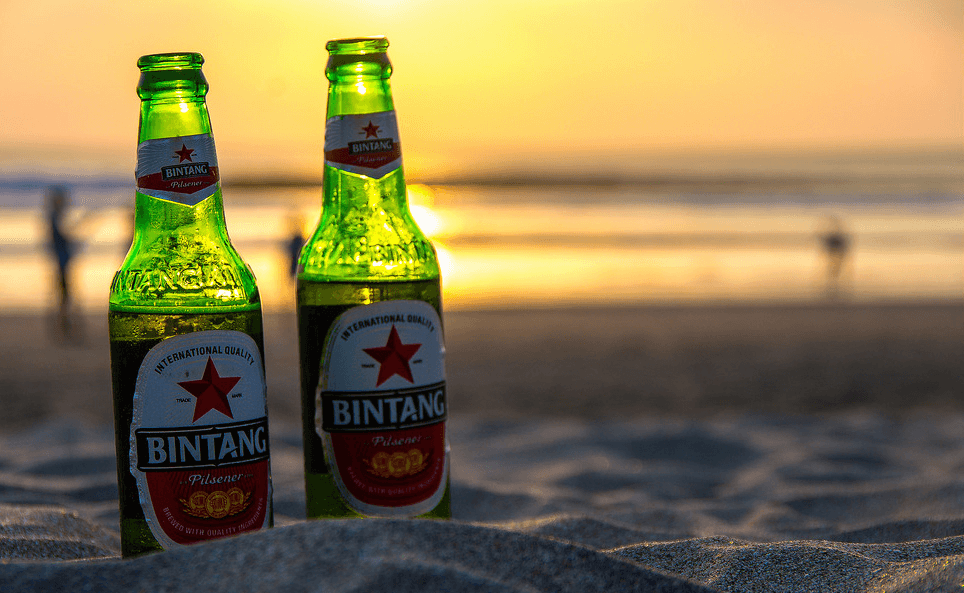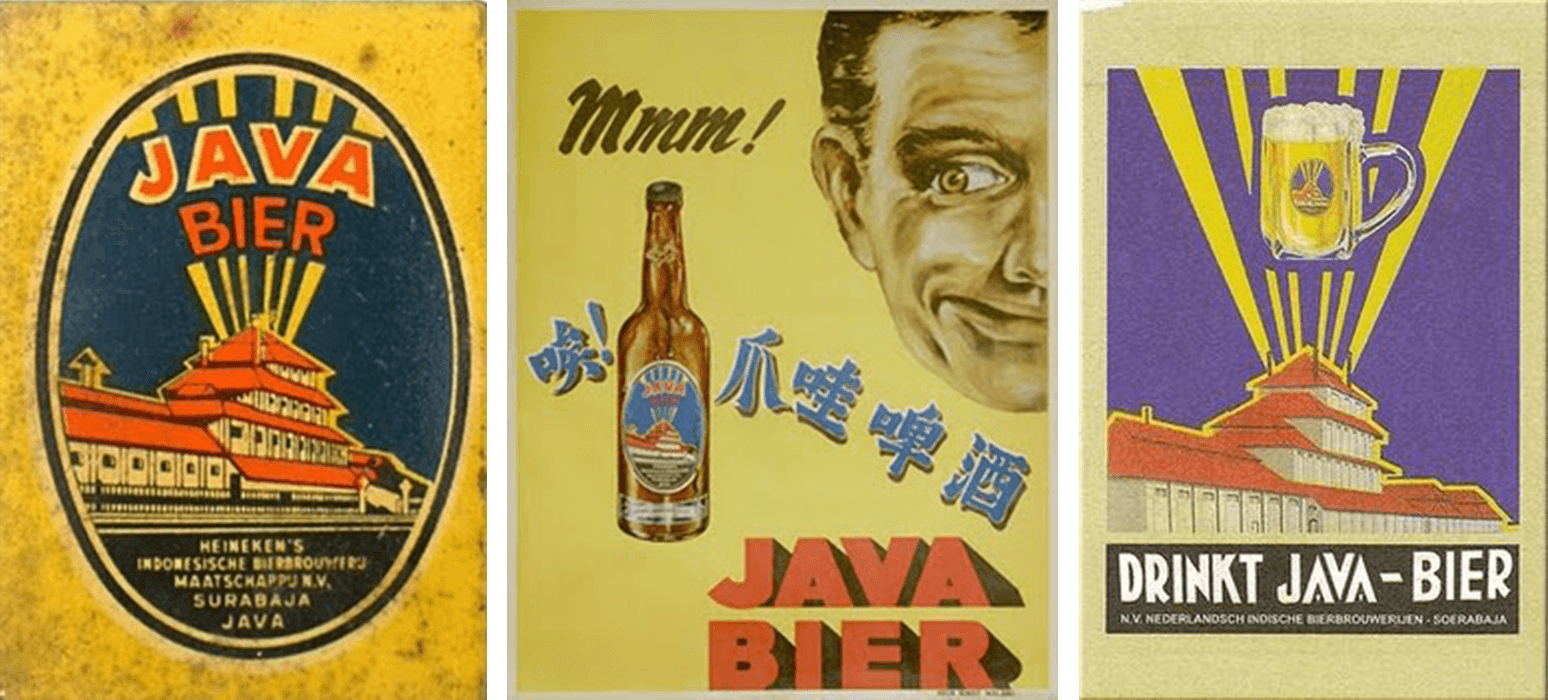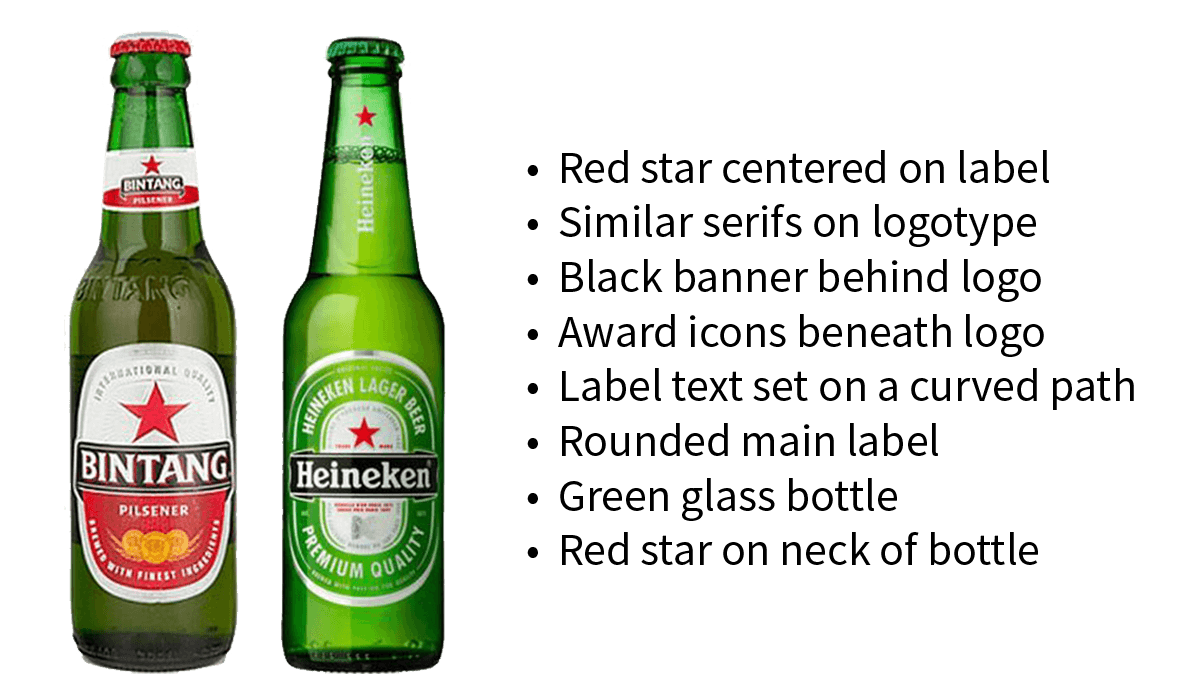Bintang is ubiquitous in Indonesia. Ask for a beer and you’ll get a Bintang.

With net sales up 21% and a dominant 69% marketshare (2016), Bintang is crushing it. So I wanted to know: how did Bintang assume the Indonesian-beer throne?
But before we dive in, a quick primer on alcohol in Indonesia. The traditional brews of Indonesia (and Southeast Asia in general) are made from the locally-available produce – generally rice, palm, and coconuts. Their production goes back 1,000s of years. Only more recently have sugarcane and cereal grains become widespread. “Beer” as it’s generally known – sparkling, glutinous, commercialized – is a colonial import that’s <100 years old here.
Further, the cultural diversity between Indonesian islands leads to varied production and consumption patterns. In some regions (e.g. Java, Bali), foreign and domestic brands are widely available. In others, (e.g. Aceh) alcohol is prohibited entirely. Coupled with massive import tariffs (150% on liquor, 90% on wine), this has enabled hyper-local craftspeople to thrive across Indonesia: home-brews account for 80% of the alcohol consumed across the country (per The Economist).
Given that context, let’s get back to Bintang. As a European-style pilsner, it’s perhaps unsurprising that Bintang’s roots go back to Indonesia’s colonial era.
In 1929, the Dutch government began construction of a commercial brewery in East Java. Operating as Nederlandsch-Indische Bierbrouwerijen NV (“Dutch-Indian Beer Breweries”, NV means it was publicly traded), it began producing and distributing “Java Bier”. Based on what was popular at the time, this beer was likely a Bavarian bottom-ferment made from imported European barley and hops. (Alas, this is pure speculation. The tasting notes for Java Bier have been lost to history.) Per my understanding, Java Bier was the first mass-produced beer in Southeast Asia.

Back in the Netherlands, the already-enormous Heineken’s Bierbrouwerij Maatschappij NV (“Heineken’s Beer Brewery Society”, the same Heineken company we know today) decided to focus on going international. New communication technologies and the end of prohibition in the United States made foreign opportunities more appealing than investing further in the already-competitive European market. Thus, in 1936, Heineken acquires a majority stake in the aforementioned Nederlandsch-Indische Bierbrouwerijen NV and renames it Heineken’s Nederlandsch-Indische Bierbrouweerijen Maatschappij NV (“Heineken’s Dutch-Indian Beer Breweries Society”).
It’s hard to know how this acquisition would have affected the taste or availability of Java Bier. Some sources say Heineken brought over “technical advisors” to improve the brewing process. Who knows. Turns out, it wouldn’t much matter – within a few years, World War II consumed the continent. By 1942, Allied forces ceded the Indonesian region to the Japanese, who occupied it until 1945. Following Japanese surrender, the Dutch tried to reassert their colonial rule and the Indonesian National Revolution began. Four years later, the Dutch yielded and Indonesia’s independence was internationally recognized.
During these war years, it appears that Heineken’s brewery was offline. I can only imagine that the grain, materials, and manpower it required were diverted elsewhere. Perhaps it was even retooled for rubber or oil production.
Following Indonesian independence, though, the brewery resumed operation. But Java Bier’s run was over: still operating under Heineken’s Dutch management, the brewery started making “Heineken Bier” instead. This beer was likely based on the same recipe used in other Heineken factories around the world. RIP Java Bier.
Ten years later, in 1957, a period known as Guided Democracy begins in Indonesia. Defined as “a threefold blend of nasionalisme (‘nationalism’), agama (‘religion’), and komunisme (‘communism’)”, this government structure “was intended to appease the three main factions in Indonesian politics — the army, Islamic groups, and the communists” (Wikipedia). Major industries and Dutch-controlled businesses were nationalized, including the Heineken brewery. For the next decade, the national government was brewmaster. Although it doesn’t appear to have immediately changed the recipe, it did change the name – “Heineken Bier” became “Bir Bintang”.
Bintang reached its final form ten years later. In 1967, Indonesia’s Guided Democracy ended and the brewery returned to Heineken ownership. But rather than resuming production of Heineken Bier, the Dutch owners stuck with Bintang. They updated the brand and recipe, releasing “Bintang Baru” (“New Bintang”). This new beer was essentially a toned-down Heineken, with a lower alcohol content and less hoppy flavor. From what I can tell, Bintang Baru was an immediate success and the the “Baru” moniker was quickly phased out. To this day, Heineken and Bintang’s shared history is easy to spot:

So there you have it – the “how we got to now” for Indonesia’s favorite beer. I did my best to learn from reputable sources, including some Indonesian blogs (using my nascent Indonesian reading skills and Google Translate). Thanks for reading!
How many drunk Australians in Bintang tank tops have you seen?
You mean our friend from Kuta here?

https://www.instagram.com/p/BVTXivuAvuU/?taken-by=milartbali